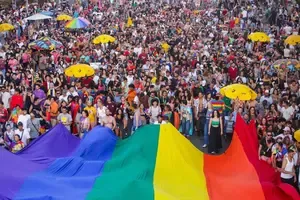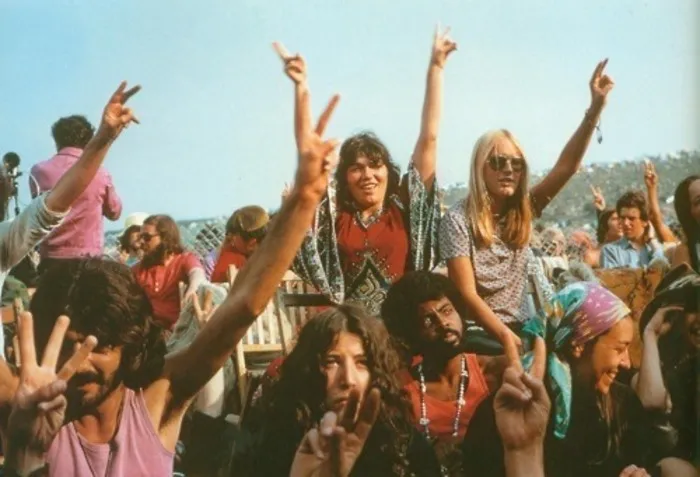Alternative urban cultures have played a significant role in contemporary societies, representing forms of expression and resistance in urban environments. These cultures are made up of groups of people who share interests, values and practices that often depart from the conventional, challenging dominant norms and promoting cultural diversity. In this article, we will explore the evolution, characteristics, influences and impacts of alternative urban cultures, examining how they shape the urban landscape and provide a platform for creativity and individual expression.
Evolution of Alternative Urban Cultures
Alternative urban cultures emerged as a response to cultural homogenization and restrictions imposed by conventional society. They have their roots in countercultural movements of the 20th century, such as the hippie movement, punk, the LGBT movement and many others. These movements questioned the status quo and sought alternative ways of life and expression.
Hippie Movement: The 1960s were marked by the hippie movement, which promoted values such as peace, love, equality and freedom. Hippies rejected consumerism and authoritarianism, preferring communal living, the use of psychedelic drugs and artistic experimentation. Punk Movement: Emerging in the 1970s, the punk movement was characterized by punk rock music, which had an attitude of rebellion and antiestablishment. Punks wore provocative fashion, such as torn clothes and colorful hair, and expressed their anger against social and political injustices.
LGBT Movement: The fight for LGBT rights also played an important role in the formation of alternative urban cultures. LGBT groups challenged discrimination and invisibility, creating safe and festive spaces to express their identity. These early movements influenced the formation of alternative urban subcultures that developed around shared interests such as music, fashion, art and lifestyle. Some of the most notable subcultures include the goths, the ravers, skateboarders, hipsters and many others.
Characteristics of Alternative Urban Cultures
Alternative urban cultures are characterized by a series of distinct elements that differentiate them from the dominant culture. These characteristics vary from one subculture to another, but some of them are broadly applicable such as visual identity: Alternative cultures often have a unique visual aesthetic, expressed through clothing, hairstyles, and accessories. For example, goths are known for their dark style, while ravers embrace fluorescent clothing and bright accessories.
Music: Music is a central part of many alternative urban cultures. Each subculture often develops its own musical genre or embraces existing musical styles. For example, punk rock is central to punk culture, while electronic music is essential to ravers. Community Spaces: Alternative cultures often create community spaces, such as nightclubs, art galleries, festivals, and gatherings, where members can gather, share experiences, and express themselves freely.

Influences on Alternative Urban Cultures
Alternative urban cultures are shaped by a variety of influences ranging from politics to technology. Some of the most notable influences include: Globalization: Globalization has allowed the rapid spread of ideas, styles, and subcultures across the world. Members of alternative cultures often take inspiration from elements from different cultures, creating unique fusions.
Technology and Media: The internet and social media have played a crucial role in shaping and promoting alternative urban cultures. They provide platforms to share information, connect with other members of the subculture, and promote events and initiatives. Politics and Activism: Many alternative cultures have political roots, and activism plays an important role in their practices. For example, the punk movement is strongly associated with political and social activism.
Impacts of Alternative Urban Cultures
Alternative urban cultures have profound impacts on societies and the lives of their members. Some of the most notable impacts include cultural diversity: Alternative urban cultures promote cultural diversity, challenging cultural homogenization and celebrating individuality and creative expression. Social Change: Many alternative cultures are associated with social and political activism, promoting awareness of issues such as human rights, gender equality and social justice.
Creative Opportunities: Alternative cultures offer opportunities for creative expression in various forms, including music, art, fashion, dance and literature. Community and Belonging: For many members, alternative cultures provide a sense of community and belonging, where individuals can feel accepted and understood.
Artistic Expressions in Alternative Urban Cultures
A distinctive feature of alternative urban cultures is their commitment to artistic expression. Through various art forms, these subcultures find ways to convey their messages, emotions, and identities in unique ways. Art plays a central role in creating subcultural identities and communicating values and concerns. Let's explore some of the most prominent artistic forms within alternative urban cultures:
Music: Music is a driving force in many alternative urban subcultures. Each subculture has its own distinctive soundtrack that is both a reflection of its beliefs and an influence on its members. For example, punk rock is an influential musical genre in punk culture, with lyrics often addressing themes of rebellion, alienation, and inequality. Electronic music parties, such as techno and trance, are an essential part of rave culture, providing a sensorial experience that transcends the limits of everyday life.
Visual Art: Visual art plays a crucial role in expressing alternative urban cultures. The unique visual aesthetic of each subculture is often reflected in murals, graffiti, illustrations, fashion, and event flyer designs. Goths, for example, are known for their dark and romantic aesthetic, which is often represented in their paintings and sculptures.
Dance: Dancing is a fundamental form of expression in many subcultures, especially in the rave scene and hip-hop. Breakdancing, an important part of hip-hop culture, is a form of dance that combines acrobatic, creative movements with personal expression. At rave parties, dancing is a way to connect with the music and with other participants, creating a sense of unity and belonging.
Literature: Literature is another form of artistic expression that plays an important role in alternative urban cultures. Many members of these subcultures write poetry, fiction, or nonfiction that reflects their experiences and perspectives. Zines, small independent publications, are a popular medium for sharing writings within subcultures, allowing members to express their opinions and ideas in an accessible way.
Conclusion
Alternative, constantly evolving urban cultures continue to play a significant role in contemporary society. They represent the search for authenticity, the celebration of diversity and resistance against dominant cultural norms. These subcultures originated from 20th-century countercultural movements, such as the hippie movement and punk, and have expanded to include a variety of groups and interests.
The influence of alternative urban cultures is evident in many aspects of everyday life, from fashion and music to politics and activism. They promote cultural diversity, stimulate creativity and provide opportunities for individual expression. Furthermore, many of these subcultures have deep political roots, contributing to awareness of social issues and promoting change.
